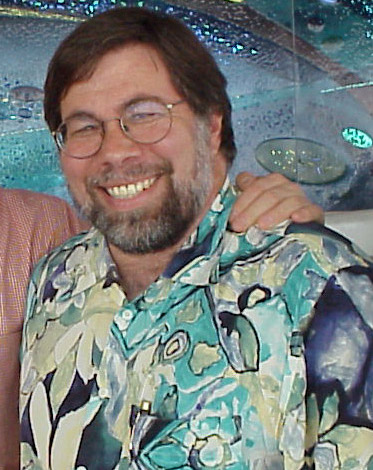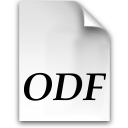09.01.10
Posted in Courtroom, GNU/Linux, Microsoft, Patents, UNIX at 11:59 am by Dr. Roy Schestowitz

Summary: Centrify and Likewise get sued, having attempted to outdo Free software by faking it and adding software patents to it
TO FREE SOFTWARE, THE BIGGEST patent problem (as far as software companies are concerned) is Microsoft, not Apple or IBM (here is a new analysis about Oracle). Microsoft has already grown some patent tentacles, which include patent trolls like Paul Allen and several offshoots created by former Microsoft staff. Two such Microsoft-affiliated software patents proponents put patents in UNIX and Linux. They are called Centrify [1, 2, 3] and Likewise [1, 2, 3, 4], which are merely a nuisance to Samba. It’s probably obvious that Samba is strongly against software patents (it was an early adopted of GPLv3), unlike those Microsoft patents boosters who are only good at publicity and faking “open source” (Likewise falsely markets itself as “open source” when it's actually 'open' core, i.e. proprietary).
We are somewhat pleased to see Centrify and Likewise getting sued for patent violations as they very much deserve it for their stance on software patents (which hopefully they will rethink now). Quest Software has just sued them both.
Aliso Viejo-based Quest Software has sued competitors Centrify Corp. and Likewise Software, Inc., the firm said late Friday, claiming that the two firms infringe on one of its patents, U.S. Patent No. 7,617,501. According to Quest, the patent covers the extension of Windows Group Policy into Unix, Linux, Mac, and other non-Windows computer systems. Quest said it is seeking damages and injunctive relief from Centrify and Likewise.
Centrify, which accumulated patent monopolies, is using its software patents to sue back [1, 2, 3].
This is in response to a patent infringement lawsuit that was recently filed by Quest against Centrify and another software company.
Centrify alleges that Quest Authentication Services infringes its US Patent 7,591,005, a key technology of Centrify DirectControl that facilitates the capability for UNIX and Linux service accounts and root accounts to be authenticated within a centralised directory.
They are battling over Microsoft protocols. It’s another reason to avoid Mono and Moonlight, for example. █
“Every line of code that is written to our standards is a small victory; every line of code that is written to any other standard, is a small defeat.”
–James Plamondon, Microsoft Technical Evangelist. From Exhibit 3096; Comes v. Microsoft litigation [PDF]
Permalink
 Send this to a friend
Send this to a friend
Posted in Deception, Europe, GNU/Linux, Microsoft, Patents, RAND at 11:33 am by Dr. Roy Schestowitz

Summary: Microsoft wants European GNU/Linux users to pay through the nose, but first it needs to use lobbyists like Zuck (above) to change the law in Europe, by pretending to speak for small businesses
TALKSTANDARDS.COM AND OTHER LOBBYISTS of Microsoft’s interests in Europe (including ACT and Microsoft Florian for example) lobby for RAND or defend the practice of RAND, knowing damn well that it is not compatible with Linux and therefore can justify ‘Linux tax’ over there (this issue was covered in the previous post). The RAND lobby from the usual suspects even spawns public events where the purpose is probably to sway politicians and change the law (ACT does this a lot, with Microsoft funding). There is nothing more abhorrent than lobbying to change laws by foreign companies such as Microsoft. As FFII has just put it, ‘Would you let this person “transform” your “government”?’
“It is wrong to corrupt foreign governments”
–FFII“Transformational government means hostile takeover,” says FFII at Twitter. “How dare you transform our government? Transform yourself!”
Citing unjust clauses in ACTA, the FFII says that “It is wrong to corrupt foreign governments” (that’s what Microsoft is doing in Europe right now).
Microsoft’s co-founder Paul Allen, who keeps pretending to do charity (another bogus publicity stunt), has just officially become a patent troll who uses software patents to harm large businesses. The ‘Microsoft press’ says in a blog’s headline that “Paul Allen Needs More Money” (Microsoft Florian seemingly defends this man and the Microsoft-funded pressure group ACT pretends that SMBs benefits from all that).
Katherine Noyes has just explained why “Software Patents Hurt Everyone, But Especially SMBs”:
Taken together, all this recent legal action provides a vivid illustration of many of the problems plaguing the U.S. patent system today. Software patents do far more harm than good to both the industry and consumers, and they put small and medium-sized businesses at a particular disadvantage.
Watch the lawyers fight back with their self-serving lies. It didn’t even take long.
Using the Paul Allen litigation as a hook, a piece entitled “Software patents hurt everyone, but especially SMBs”, written by PC World’s Katherine Noyes, rehashes a lot of the old arguments made against software patents. It’s a remarkably unsurprising piece that adds nothing to the debate.
Watch them just shoot the messenger claiming that a dosage of reality “adds nothing to the debate.” This site is run by patent lawyers, so nobody should be surprised by this reaction.
Should policy about software not be written for software developers with consultation from them? Why should foreign monopolies, their lobbyists, and their lawyers hijack the system? █
Permalink
 Send this to a friend
Send this to a friend
Posted in GNU/Linux, Google, Microsoft, Patents, Samsung, Search at 11:06 am by Dr. Roy Schestowitz

Summary: Microsoft uses Linux-powered phones not just to make income (patent tax) but also to spread Microsoft propaganda, which includes Linux insults
REDMOND-BASED PARASITE MICROSOFT is losing its ability to compete online and to compete in mobile, including tablets. What does it do? It extorts Linux, which increasingly leads the way in these two strategic areas. Here is another Samsung/Android phone for Microsoft to make money from owing to patent extortion (patents never named) and another HTC EVO 4G clone will receive similar treatment. It’s just a Verizon Android rumuor at this moment, just like the old rumour that Microsoft paid Verizon half a billion dollars to force all customers to use Bong [sic] ‘search’ [1, 2] — a ‘search’ which is prefiltered to yield Linux-hostile results. Microsoft loves to spit in the well. Oh, well…
Now that Microsoft is shoving Bong [sic] into Android phones, Tim from OpenBytes responds as follows:
It comes as no surprise to me when we learn that Bing now has an Android app. Microsoft really wants you using its search decision engine and if that means putting it on an massively popular Android platform (which they are starting to make money from via “deals” with HTC et al) then so be it.
The author acquired an HTC phone just days before Microsoft declared that it had successfully extorted HTC and will therefore be paid by HTC for Linux, per unit. To Microsoft it’s important to ‘tax’ mobile Linux because shipment volume there is far greater than on the desktop. The way it’s done is akin to racketeering [1, 2, 3, 4, 5, 6, 7].
Let’s remember this next time Microsoft says it “love” Open Source. Who doesn’t “love” to extort and exploit things? Linux is working pretty well for Microsoft, as long as Microsoft uses invisible software patents to claim to be the owner of Linux. █
Permalink
 Send this to a friend
Send this to a friend
Posted in News Roundup at 8:39 am by Dr. Roy Schestowitz

Contents
-
-
I personally welcome the fact that vCloud Director is based on Linux.
-
-
Server
-
CaminoSoft Announces Enhanced File System Archiving Software for OES-Linux Servers
-
Kernel Space
-
-
The Linux Foundation today kicked off its two-day debut of LinuxCon Brazil. Attendees got a rare opportunity to see both Linus Torvalds and Andrew Morton on stage, together, and in person. Based on this snapshot from Intel’s Dirk Hohndel, I think attendees were very excited about that opportunity.
-
Applications
-
Proprietary
-
That is changing as AutoDesk announced that AutoCad is coming back to MacOSS. As the same hardware runs GNU/Linux and MacOS is a UNIX-like OS it is quite possible that a release for GNU/Linux will appear sooner rather than later. That should shut up some of the trolls who insist availability of one app is the cause for GNU/Linux to have a small share on store shelves.
-
“We see tremendous potential for the ARES CAD platform from Graebert,,” explains Deelip Menezes, Founder and CEO of SYCODE. That’s the reason why we took the initiative of studying the internal working of this new robust platform. We appreciate the assistance and support received from Graebert while developing the data exchange add-ins that we have released today. We are continuing the cooperation with ARES versions for Mac and Linux. In that regard we have already started the enormous task of making all our code cross platform so that we are able to support ARES on the Mac and Linux as soon as possible.”
-
Instructionals/Technical
-
Wine
-
Wine runs many Windows programs nicely these days, including more and more serious music applications. Dave profiles some of those applications running under the latest & greatest Wine 1.2
-
Games
-
Ubuntu games can be found in the operating systems by clicking Applications, then Ubuntu Software Center. Also, Linux gamers can find lists of online Ubuntu games all over the Internet, but finding the good ones is the hard part. Regarding native online-playable Ubuntu games, here is a list of the best so far.
-
Desktop Environments
-
K Desktop Environment/KDE SC)
-
Not only is KDE 4.5 a far superior desktop to its predecessor, I would go as far to say that it has finally surpassed 3.5 in both usability and performance. That’s a bold statement considering how the desktop has evolved.
But what have the developers done to make 4.5 so much better than that all other iterations in the 4.x branch? What they did was work some serious developer Kung Fu. The difference between 4.4 and 4.5 is very noticable. Let’s take a look at some figures from the KDE bug statics:
* 16022 bugs fixed
* 1723 feature requests filled
-
-
Back in April of 2008, I wrote about a small company working with Google and delivering a PC running a Googleized version of the Linux Operating System. Notably, that company is still around while similar attempts in the end-user Linux arena such as Jolicloud are getting much more press.
Many, back then, mistakenly took the gOS name as the Google Operating System. It actually stood for Green Operating System (and apparently is now a Linux build called the Good Operating System).
Google is expected to introduce the Chrome OS in the fourth quarter of this year and there have already been a variety of leaks pointing to hardware displaying the product. Google also owns Android which is already a rapidly growing hit in the mobile market. One Google employee commented recently that, at some point, the two projects by Google will likely converge.
-
Chakra
-
-
This recent release of Chakra GNU/ Linux, codenamed ‘Jaz’, provides users with many new features. Chakra 0.2.0 features the Linux kernel 2.6.33.7 with LZMA support, KDE SC 4.4.5, X.Org 1.7.7, access to 5670 software packages, a new cinstall multi-tool for creating and managing bundles and packages and many other enhancements. Read the official release announcement for details. I found several useful applications setup and ready to go including K3B burning, Bluedevil bluetooth management and Bangarang for connecting to media and TV.
-
New Releases
-
-
-
-
· Announced Distro: NetSecL 3.0
· Announced Distro: Linux Mint 9 Xfce Edition
· Announced Distro: Fedora 14 Alpha
· Announced Distro: Vyatta 6.1
· Announced Distro: Zenwalk Linux 6.4
· Announced Distro: Parted Magic 5.4
-
Red Hat Family
-
Ganart endeavors to bring consumable banking to the masses by developing software and systems in a cloud that offers its customers consistency with their financial services from end to end. When it first began developing these systems, Ganart built a datacenter based on the Red Hat Enterprise Linux operating system.
-
A leading provider of open source solutions, Red Hat Inc. (RHT – Snapshot Report) continues to support organizations with a varied business demand in the Information Technology (IT) infrastructure. IT based organizations are aggressively adopting Red Hat’s open solutions and Virtualization technology to grow their businesses.
-
Fedora
-
Ksplice, the technology that allows Linux kernel updates without a reboot, is now free for users of the Fedora distribution. Using Ksplice is like “replacing your car’s engine while speeding down the highway”, and it can potentially save your Linux systems from a lot of downtime. Since Fedora users often live on the bleeding edge of Linux development, Ksplice makes it even easier to do so, and without reboots!
-
A bit of discussion about update policy in Fedora has been brewing lately and I’ve been reading and thinking (and stewing and moaning and wringing my hands) about the discussion a lot.
-
Debian Family
-
Early in 2006, he became the release manager for the Debian Installer project, taking over from veteran Joey Hess.
According to the Debian project, Frans was a maintainer of several packages, a supporter of the S/390 port, and one of the most involved members of the Debian Installer team.
-
Canonical/Ubuntu
-
Ubuntu is far and wide the most popular Linux distrobution, although Mint certainly has its advantages for beginners, such as the menu organization. Ubuntu Forums member KdotJ shows us how to add Mint’s GNOME menu to your Ubuntu desktop.
-
-
-
Linux-based and with a decent set of features, this wireless router supports many new technologies, and can be quite exciting. It includes Wireless-N, detachable antennae, USB and third-party firmware support. The last bit here would arouse the enthusiast inside you, but can this make for the area where it comes up short?
-
Like motherboards, the hardware Asus is known for making, you can use many different third-party router operating systems (aka firmware) on the RT-N16. Equipped with an overclockable 480Mhz CPU and 128MB of RAM, the router performed great in our trials when it was running DD-WRT, one of the most well-known Linux-based open-source router firmware options.
-
Lineo Solutions and Timesys have collaborated on a new LinuxLink subscription supporting the 500MHz Renesas SH7724 SoC (system on chip). The Timesys LinuxLink subscription supports Renesas’ SH7724-based MS774 development board and offers a Linux 2.7.33.6 kernel, drivers for touchscreens and other peripherals, plus the usual LinuxLink tools and services.
-
Phones
-
Powerful operating systems such as Android have allowed developers to increase mobile phones’ potential to become all-round portable communication devices. Being lost is impossible with the latest mobiles and you can already get applications that use a mobile’s GPS receiver to find your nearest pubs, cash machines and hospitals. That information can then be routed through another application that will show you a map to get to your destination. All of that on top of the social networking, the newspapers you can download and the life organising you can do – all on the move.
-
Android
-
The CyanogenMod team uses an instance of Google’s gerrit tool for code review and patch submission, helping make this former backport of Android 1.6 to T-Mobile’s G1 into thriving development for the G1/MyTouch/MyTouch 1.2, Droid, Nexus One, HTC Aria, HTC Desire, HTC Evo 4G (minus 4G and HDMI output), Droid Incredible, and MyTouch Slide. HTC Hero (including Droid Eris) are coming soon for 6.0, with Samsung Galaxy S devices expected to be supported in 6.1.
-
We know you’re positively giddy with excitement to get at this OlivePad rebadge and ViewSonic is today fanning those flames of desire with a little bit of pre-IFA PR. Made official today, the 7-inch ViewPad 7 will try to lure in Android lovers with its tasty Froyo parfait, underpinned by hardware that includes front- and back-facing cameras, 3G for both phone and data transmissions, and a full-sized SIM slot.
-
To say that the eLocity A7 isn’t going directly head to head with the iPad isn’t to say that it’s not out to impress. The solidly-built 7″ tablet is powered by nVidia’s beefy, dual core Tegra 2 processor, will run Froyo out of the box, and is capable of outputting a plethora of formats at 1080p via an included HDMI cable. Eye catching stats. When the eLocity team stopped by our offices, they were sure to tout its media muscle, showing off some truly impressive HD content stored on the diminutive tab, through either 4 GB of internal storage or Micro SD.
-
With two Archos 5 tablets in my rearview mirror, I am definitely looking forward to the new 101. The nomenclature is shorthand for the 10.1″ screen with 1024×600 resolution.
-
-
The MING devices from Motorola are touch smartphones, with a transparent flip-screen to protect its touch surface. The devices have run on a home brewed Linux based operating system up until now, but Motorola has just announced three new MING phones, all running on Android.
-
Apple’s app store is well equipped with 250,000 apps and 70% apps from them are supplied purely through payment. Whereas, Android’s apps 64 % of the 95,000 are supplied at free of cost from Google’s Android market.
[...]
vAndroid is at present not having any approval process and this creating a chance for the hobbyist apps to float on the Android. Also, Android encourages its developers to use open-source and Linux platform. This is another primary reason for the apps availability at free of cost in Google’s Android market.
-
-
[O]n Apple’s App Store, roughly 70 per cent of the apps are paid while on Android Market, it’s almost exactly the other way around, with 64 per cent free apps.
-
Of course, the other major selling point for many buyers will be this phone’s OS. It runs on Google’s Android 1.6 system, which is user friendly and open-source. The fact that it’s open source opens up the playing field to developers who might not otherwise have the financial muscle to develop their apps from the ground up. That means more apps for the user. Android has been around since 2008 but it’s only in the past 12 months that growing support from developers and handset makers has prompted some commentators to claim it poses a serious threat to Apple’s iPhone iOS dynasty.
-
Last week open source software vendor Red Hat (RHT) laid out its vision for a comprehensive Platform-as-a-Service (PaaS) solution as a part of its Cloud Foundations.
-
Sub-notebooks
-
Trinity Audio Group Inc. announces their newest Netbook, a refreshed model that includes Transmission, a custom audio operating system and the faster 1.66 Ghz Intel Atom based CPU. New software additions and updated real-time Linux kernel are the highlights of this best selling product.
-
Software gives HP a minor edge as it has both the QuickWeb instant boot Linux front end as well as QuickSync for PC-to-PC data sync and an already-installed copy of the free Evernote app.
-
Tablets
-
The tablet may be based in Japan and while it wasn’t mentioned if the Shogo would dip its hand in the international scene, you have to wonder how it would far if it did.
-
Fusion Garage today scored a partial but possibly ineffective win in its legal dispute with TechCrunch after a judge ruled out certain requests from the tech site in the lawsuit. District Judge Richard Seeborg denied a call for a preliminary ban on sales of the JooJoo tablet as TechCrunch wasn’t clear how much profit Fusion Garage would get and thus what kind of damages there might be. The judge added that there wasn’t clear an injunction would be needed to recover any perceived losses.
-
Rather than use a proprietorial operating system such as Microsoft Windows, the new machine is expected to run on the open-source operating system Linux.
-
next stage of development for the military’s advanced virtual satellite system that promises to replace monolithic spacecraft with clusters of wirelessly-interconnected spacecraft modules.
-
Events
-
LinuxCertified Inc, a leading provider of Linux training and services, announced its next Embedded and Real-Time Linux Development class to be held in San Francisco Bay Area from September 15th – 17th, 2010.
-
Web Browsers
-
SaaS
-
The Cloudant team is pleased to make available its ‘BigCouch’ software project as open source software under the Apache 2.0 license. We have been the beneficiary of countless open source projects while constructing this system, so it is only fitting that we share our efforts in hopes that people will not only find utility, but also assist us in making it better.
-
Source Code Licensed under GPLv2, Contains BSD Licensed Code from Sun’s Project Honeycomb
-
Earlier this summer, Rackspace open-sourced its cloud infrastructure and teamed with NASA to create OpenStack.
-
For its part, Eucalyptus Systems, an open source private cloud software developer, will offer infrastructure software that helps organizations deploy massively scalable private and hybrid cloud computing environments securely. MomentumSI comes in on the back end to deliver the solution.
-
The strategic integration partnership brings about a convergence of SOA, cloud and open source software
-
Healthcare/Biology
-
As the Veterans Affairs Department considers an open source development program to modernize its Veterans Health Information Systems and Technology Architecture (VistA) medical record system, officials eventually will have to decide whether to retain all or part of the existing computer language of the system, according to industry members involved in the project.
-
-
-
As the Veterans Affairs Department sorts through responses to a request for information on the viability of open source software as a component of the VistA electronic health record architecture, it’s also making clear that the MUMPS programing language will continue to underpin VistA in the near term.
-
Funding
-
-
The company’s expertise lies in core computing environments like Linux development, hardware platform, media processing, product testing, research in networking and audio / video technology, network administration, Linux / Windows system administration, Linux internals, programming and X windows.
-
FSF/FSFE/GNU/SFLC
-
Set up your own plug computer to run GNU social — we built one, and called it the FooPlug.
-
Project Releases
-
Version 1.0 of CEDET – a “Collection of Emacs Development Environment Tools” – has been released and brings to the Emacs editor features typically found in Integrated Development Environments such as project management, smart code completion and help, symbol reference analysis, code generation, advanced code browsing and UML diagramming. The features are ones that “developers have come to expect from an editor” say CEDET’s developers and are focused on, but not restricted to, C and C++ development. For example, the completion engine is generic and can work with any language which has an appropriate parser; a per-language support matrix shows which features are supported with which languages.
-
The Lightspark project has released version 0.4.4 of its free, open source Flash player. The latest version of the alternative Flash Player implementation includes a number of bug fixes and several new features.
-
As a member of the IKS european project Nuxeo contributes to the development of an Open Source software project named fise whose goal is to help bring new and trendy semantic features to CMS by giving developers a stack of reusable HTTP semantic services to build upon.
-
It is released under the GNU Lesser General Public License (LGPL).
-
Government
-
It sounds obvious, but the idea remains revolutionary. For the first time, there would be a single repository for source code that could be shared between the hundreds of agencies, commands, and programs in DOD. Developers would be able to share their work in a familiar, web-based environment. A previous version of forge.mil was pulled for unknown reasons, but the current iteration is based on the TeamForge product from CollabNet. If you’ve used SourceForge, you get the idea. The DOD is the largest consumer, and one of the largest developers of software in the world. Much of this software is redundant, locked up by vendors and integrators, can’t work with other software, and nobody remembers how to maintain it. There’s no doubt forge.mil was long overdue.
-
Openness/Sharing
-
This has led to a proliferation of harmful and incompatible CC-NC and CC-ND licensed works, mistakenly labeled “Free.” Mako Hill points out that while Creative Commons pursued its goal of “Balance, compromise, and moderation,” it failed to define or defend any core freedoms. Indeed, there seems to be no concern about what the “Free” in Free Culture means. To most it means, “slightly less restrictive than modern copyright.” Even so, most CC licenses are more restrictive than pre-1970′s copyright (because modern copyright’s extended terms and more draconian punishments for infringements still apply).
-
-
Curriki has a start and a long way to go. Jones says college professors, teachers and authors have uploaded 38,000 educational pieces to the site, www.curriki.org. It has about 135,000 registered users. No question the site needs to become easier to navigate, Jones and McNealy acknowledge. And despite the volume of contributions, there are considerable gaps for those looking for a complete K-12 experience.
-
More importantly open source proponents argue that opening the field up to the global population of software innovators allows for more brain power than keeping it ensconced in the limited framework of proprietary secrecy. This results in an overall better product as the aggregation of creative minds is more expansive. It also means speedier resolutions of software glitches. (Indeed, in one of the most secretive arenas of software development – quantitative trading – many have warned about the alarming number of simple coding errors such as the one responsible for the “flash crash” on May 6, 2010).
-
And in the spirit of the open source software movement, he reached out to the wider scientific community in 2008, launching a crowd-sourcing project called the Open Notebook Science Challenge. “We have drawn up a list of different compounds and solvents that are priorities and students are asked to measure their solubility,” he says.
-
Open Hardware
-
The concept of open source is now generally well understood in relation to software, but can it be extended in a clear-cut manner to hardware too?
Yes, say a group of open source hardware enthusiasts, who have been working on the draft version of a definition of open source hardware. They hope to finalise it at a summit, scheduled for September in New York.
Open source in the context of software implies not only the free availability of source code, but also the freedom to modify and redistribute it. The concept has widened and is being applied in other domains too.
-
But don’t take my word for it; go through the slideshow below, which was prepared for Maker Faire Africa and which describes four the four core interrelated machines, which can be used in everything from a village blacksmithy to a full-scale factory or trade school. The best part? Dad’s giving them away — this is an entirely open-source project. The problem? Getting people in the NGO/development community to even understand what a machine tool is and why one would be valuable. If you can help spread the word, please do! His contact info and links to more information are in the slideshow, so please check it out.
-
Programming
-
The Rails inventor said that more than 1600 contributors submitting thousands of commits over about two years have jointly made Rails “better, faster, cleaner, and more beautiful”. New features include a router which allows declarations that are based on the REST (Representational State Transfer) architecture and an interface to simplify the addition and management of plug-ins. Overall, the new Rails is considerably more modular than previous versions and more dependency agnostic, allowing developers to easily use Test::Unit, Prototype or DataMapper and other libraries instead of Rails’ default libraries.
-
Communities whose members are termed “contributors” rather than “members” or “participants” may well be unequal places where your interests are subsidiary to those of the copyright owner. They are often dominated by users and fans of the software rather than by co-developers, since the inequality makes it hard-to-impossible for a genuine co-developer to align any fragment of their interests on equal terms. Indeed, this inequality is seen by some dual-license proponents as one of the attractions of the model as they seek a community of enthusiasts and (hopefully) customers that they can exploit without competition.
-
The R open-source data mining language is quickly becoming the lingua franca of the budget-constrained data analyst who wants to harness the power of predictive analysis without a steep, complex, and expensive learning curve. Taking advantage of a gap in the market, Revolution Analytics was formed to commercialize R and raise its applicability in commercial settings.
-
The R programming language could be coming to a workplace near you — if it hasn’t arrived already. The big deal about R is that it can analyze Big Data, those exploding data sets that have traditionally defied analysis.
R is the brainchild of Ross Ihaka and Robert Gentleman (known as “R” and “R”), academics at the Department of Statistics at the University of Auckland, New Zealand. Since Ihaka and Gentleman wrote the original R paper in 1993, R has become the lingua franca of analytic statistics among students, scientists, programmers and data managers.
-
Because today, the very same Huffington Post published this wonderful post from dangerous nutcase Jenny McCarthy about how autism is caused by vaccines and can be cured with experimental treatments that the established medical community doesn’t want you to know about. We can only assume that as soon as the editors discover this conspiratorial nonsense, they will promptly remove it.
-
Yesterday, former Air America editor in chief Beau Friedlander had a silly little blog at the Huffington Post in which he promised a $100,000 bounty for a Glenn Beck sex tape. The post was actually a barely coherent, largely inaccurate history of neoconservatism, plus complaining about Glenn Beck, that ended with a paragraph offering “a $100,000 payday to the person who will come forward with a sex tape or phone records or anything else that succeeds in removing Glenn Beck from the public eye forever.”
-
PR/AstroTurf/Lobbying
-
The grassroots pressure group Americans for Prosperity (AFP), that actively fought health care reform, boasts “our citizen activists” are “the heart and soul” of the organization. So AFP wants the public and the media to believe. But an exhaustive report in the August 30, 2010 issue of The New Yorker magazine, shows that the heart and soul behind AFP are really the oil billionaire brothers David and Charles Koch of Koch Industries, whose privately-owned oil enterprise has made them among the richest men in America.
-
The paper reports that Barber is working with 5WPR to help change the perception of his affair with Johnson.
-
Tiki Barber has hired a third p.r. agency to polish his image after splitting with his then-pregnant wife, Ginny.
-
Censorship/Privacy/Civil Rights
-
According to a story from the Associated Press, the students will wear a jersey at school that has the RFID tag attached. The tag will track the children’s movements and collect other data, like if the child has eaten or not. According to a Contra Costa County official, this is a cost-savings move, as teachers used to have to manually keep track of a child’s attendance and meal schedule.
-
We recently wrote about a somewhat surprising ruling by the appeals court in the DC circuit saying that long-term use of a GPS to track someone without a warrant violated the 4th Amendment. What was surprising about this is that, while state courts had ruled similarly, the federal courts had almost universally ruled that such tracking was legal.
-
The point of the Great Australian Firewall is revealed at last today – it’s to keep Aussie politicians in line.
-
Internet/Net Neutrality/DRM
-
Apparently, companies negotiating a network neutrality compromise at the Information Technology Industry Council (ITI) have reached a general agreement.
-
That monthly $1.99 fee for something the company isn’t doing for customers is now one of the highest of its type in the telecom industry, and there appears to be nothing to justify it.
-
Time Warner Cable has figured how to make customers pay more for a “service” that consists of doing absolutely nothing: it doubled its fee to not print customers’ names in the phone book. Time Warner now charges $1.99 a month, or almost $24 a year, for an unlisted number. Verizon charges $1.75 a month not to list your name in its phone book, and AT&T charges $1.25 a month not to provide the same service.
-
Euronet migrates from Microsoft Windows to Red Hat Enterprise Virtualization and Red Hat Enterprise Linux
-
-
-
Intellectual Monopolies
-
More than three decades after Clemens Franek moved to Los Angeles and teamed up with aspiring actor Woody Harrelson and aspiring screenwriter Bobby Farrelly to sell beach towels whose circular shape helped beachgoers tan evenly, a Chicago appeals court has said the invention can’t be trademarked.
-
Copyrights
-
San Francisco based Zaptunes has launched offering unlimited DRM free mp3 downloads for $25 per month. They say they’re adding songs constantly, but have started with 8 million tracks from all four major labels and many indies. To kick things off, the $25 is waived for the next 30 days.
-
It’s no secret that US Commerce Secretary Gary Locke is quite confused over intellectual property issues. There has yet to be a case where he’s actually questioned a highly biased or debunked industry study on the issue, and he seems to enjoy celebrating with the entertainment industry, even as the government has debunked the studies he relies on. But it’s really sad that he doesn’t even seem to consider the other side at all. His latest move is to side with the RIAA and effectively warn ISPs that they need to become copyright cops for the entertainment industry establishment.
-
I’ve been hanging around the ‘Balanced Copyright For Canada‘ Facebook group recently. The name of the group is a misnomer. Balance has nothing to do with what the founders of the group intend. In fact the impression that I get is that they think that the ACTA treaty is too lenient.
A Preview of Alice 3.0, Introductory Programming in 3D
Credit: TinyOgg
Permalink
 Send this to a friend
Send this to a friend
Posted in Apple, DRM, Microsoft, Patents at 3:34 am by Dr. Roy Schestowitz
Monopolists championing proprietary software (proprietary giants) go hand in hand with patent monopolies and patent trolling

Summary: Wozniak helps prove that also departing co-establishers of proprietary predators defend patent trolling
APPLE and Microsoft are both patent aggressors and both have sued Linux (vendors) using software patents. Paul Allen is the latest patent troll to join the club and as Microsoft’s co-founder he helps demonstrate Microsoft’s continued legacy as a agitator that fights against software development. It turns out that Apple’s co-founder too complements his Free software-hostile rhetoric and now defends patent trolling:
Say It Ain’t So, Woz: Steve Wozniak Says Patent Trolls Are Okay
Via Joe Mullin, we learn the rather unfortunate news that, when asked about Paul Allen’s decision to sue lots of big tech companies over questionable patents, Wozniak comes out in favor of “patent trolls” and patent holders suing companies who actually innovate. For someone so beloved by the tech community, these statements seem really unfortunate. He starts out by repeating the myth that patents somehow help out the small guy (ignoring that we’re talking about Paul Allen, one of the richest guys on the planet):
I think this lawsuit represents the idea that hey, patents, individual inventors, they don’t have the funds to go up against big companies. So he’s sorta representing some original investors. And I’m not at all against the idea of patent trolls.
The interviewer, from Bloomberg TV, pushes back pretty quickly, pointing out that Paul Allen is not the inventor and there’s no indication that the inventors on these patents would actually get any of the money should Allen succeed.
The FSF has just launched a campaign against “Apple’s latest DRM patent”. It’s doubly malicious because it combines an attack on the user with a patent monopoly. From the FSF’s page:
Apple has a long history of imposing innovative restrictions on its users. The Digital Restrictions Management (DRM) used in the iPhone to prevent users from installing what they want or tinkering with their devices are well-known examples.
Yet not so many people expected their latest move in that direction — Apple’s recent patent application on a new spying technology revealed their plan to dedicate users’ devices to their unlimited control.
They say that they want to protect the devices from “unauthorized usage” (i.e. theft). For that reason, your device will take a photo of the person who uses it and the surrounding place, it will record his or her voice and it will record his or her heartbeats. Once it suspects something, it will send the information to Apple which will talk to the “responsible party.”
Going back to Allen’s frivolous lawsuit, some label is “an enigma”.
Paul Allen: When a Patent Troll is an Enigma
[...]
But given the notoriety of the case and the scope of its claims (the Journal, or at least its headline writer, has declared an all-out “patent war”), it seems like a good opportunity to dispel some common myths about the patent system and its discontents.
And then I want to offer one completely unfounded theory about what is really going on that no one yet has suggested. Which is: Paul Allen is out to become the greatest champion that patent reform will ever know.
Brad Feld then asks: “Have We Reached The Software Patent Tipping Point?”
As I was reading through some of the Paul Allen commentary this morning, it occurred to me that this might finally be a tipping point. Last week, Microsoft asked the supreme court to hear their appeal of the I4i patent suit. I hope Google steps up and really takes a stand here given that they are on the receiving end of both the Oracle and Allen suits.
There is increased consensus in the technology press that software patents need to go away
Software patent wars are killing innovation
The software industry is rapidly tying itself up in red tape as claim meets counterclaim in patent suits blossoming all over the US.
The latest example is Microsoft’s co-founder, Paul Allen, who has launched into litigation against Apple, Google, eBay, Facebook, Yahoo, YouTube and five other companies. Apple has already had more than its fair share of court actions especially with Nokia and HTC. Oracle is gunning for Google. Every day brings some new accusation.
In almost every case, it is software nuances at the root of the problem. In some of the Apple cases, it seems that hand gestures are involved.
Oracle’s lawsuit is not forgotten either and Glyn Moody compares Ellison and Allen (yacht enthusiasts).
Amazon is actually the best counterexample to all of Interval’s claims. It was provably doing all the things that Interval claims it “invented”, and long before patents were even applied for. Against that background, suing Amazon would, of course, have been suicidal from a legal point of view.
But that still raises the larger question of why on earth Allen is doing this to anyone? As is well known, he is not short of a bob or two, so it can’t simply be for the money. Similarly, why did he wait for over a decade before blasting away at most of the top Internet players?
This is where I think the Ellison connection comes in. Allen’s action is part of the collective insanity which has gripped senior management at most computer companies. As more and more of these crazy software patent actions are announced and wind their way through the courts (or are quietly settled after much public tub-thumping), so the pressure on managers to join the feeding frenzy grows. It’s that old feeling that many of us get when some new fad takes off – that we might be missing out on something big, and that whether we think it’s really a good idea or not, we had better pile in now before it’s too late.
it’s considered “puzzling” too:
The 15-page document, filed Friday in United States District Court for the Western District of Washington in Seattle, lists the four patents and their titles, and accuses each of the 11 defendants of infringing on one or more of them. But it doesn’t point to specific programs, products, or websites that violate Interval’s intellectual property.
Groklaw has that whole thing as text and it adds that “Microsoft is asking the US Supreme Court to overturn the huge loss it sustained in i4i v. Microsoft. It’s the largest patent infringement verdict ever to be sustained on appeal.”
we wrote about this case earlier this week, noting that involvement from SCOTUS may give it another go at eliminating software patents. Here is some more coverage:
Can i4i contribute to backlash against sofwtare patents?
The courts are ignoring what everyone knows about software patents harming the Commons. Here is another new example of dangerous patents:
Thursday TWX, a member of our forums, brought to our attention a patent that was filed back on June 19th, 2008 and owned by XM Satellite Radio. According to the U.S. Patent and Trademark Office, the basis of this patent is as follows:
“The present invention relates to a system and method for providing a broadcast radio service listener with the ability to generate a personalized radio channel play-list on a radio receiver from broadcast content as it is received. More specifically, the present invention relates to a system and method for buffering content from a set of channels selected from among the broadcast channels of a source stream(s) as they are received, and for generating a playback stream using the buffered content that provides a multichannel listening experience to the user with preview, reverse, fast forward and other navigation functions for the buffered content.”
– United States Patent Application #20090320075
Here is some background information from a lawyers’ source. It helps show how software patents came about and how they relate to business methods.
Even ten years ago, software patents were highly controversial. They were hotly debated in such forums as the U.S. Patent Office’s software patent public hearings of 1994. A number of courts, including the United States Supreme Court, struggled with whether software innovations could be protected and whether the proper mechanism should be patent or copyright law. Ultimately, the courts defined enough guidelines to judge what types of software innovations could be the subject of a patent.
The jurisprudence that developed through the software patent controversy paved the way for the ultimate acceptance of patenting innovations in business methods. As a result of the software patent controversy, courts assessed whether an invention could be the subject of a patent in a more abstract and general way. With courts growing more comfortable with software patents and their inherently abstract nature, the stage was set to apply that higher level of thinking in the context of a business method patent.
Both business methods and software patents are a area of dispute. █
Permalink
 Send this to a friend
Send this to a friend
Posted in Deception, FUD, Microsoft, Office Suites, Open XML, OpenDocument, OpenOffice, Oracle at 2:41 am by Dr. Roy Schestowitz

Summary: The Microsoft camp is attacking Oracle’s OpenOffice.org (OOOo) while pretending that Oracle is an “evil empire” (whereas Microsoft “loves” open source)
THANKS to Comes vs Microsoft exhibits, last year we posted Microsoft's blatantly anti-GNU/Linux (and highly confidential) presentation. it also covered and encouraged bribery (against GNU/Linux).
At the end of last year we also showed that Microsoft had begun hiring people to fight against OpenOffice.org adoption [1, 2, 3]. That’s how a monopolist works, by targeting any sign of competition and then derailing it or bribing those involved (see the Munich story for example).
As many people may know, OpenOffice.org is having an event in Budapest this week, but Microsoft too is said to be in town (same tricks used to steal ODF’s thunder). One commenter (not verified) wrote the following comment about Microsoft some days ago:
Nicer? Not really!
Here is an excerpt from an invitation for a seminar by Microsoft in Budapest/Hungary on 8.30.2010.
“Program:
9:30 – 10:30 The art of selling against free, opensource Office competitors by Moritz Berger /
Enterprise Tech Strategist (in English)
10:30 – 11:00 Coffee break
11:00 – 12:00 Technical teardown of OpenOffice by Moritz Berger / Enterprise Tech Strategist”
Be aware that Microsoft proponents still use Oracle’s lawsuit and contrast that with some cocky remarks from Microsoft’s Paoli (the “love” nonsense [1, 2, 3, 4, 5]) to make Microsoft seem like a friend of “Open Source” while the steward of OpenOffice.org is the “new evil empire” (or something along those lines). █
Update: Regarding the OpenOffice.org conference in the same city, Rob Weir told me that “Microsoft (@moritzbe) [Moritz Berger] has a presentation scheduled for tomorrow “Building Bridges”.“
Permalink
 Send this to a friend
Send this to a friend
Posted in Asia, DRM, GNU/Linux, LG, Microsoft, Patents, Samsung, Windows at 2:22 am by Dr. Roy Schestowitz

Summary: Microsoft dependencies, Ballnux in Korea, and the ill effects of software patents there
Korea claims to be trying to get rid of Microsoft monopoly that’s reinforced by ActiveX in government and banking Web sites. This is an important issue, which the nation has complained about for years (and Microsoft was also found guilty by the courts there several times). Another problem Korea is having may have something to do with Samsung and LG, the Korean giants which not only pay Microsoft for Linux but also help spread Windows DRM. We believe that Samsung and LG pay Microsoft for Linux also because the law in Korea allows patenting of mathematics, which puts software companies at greater risk.
Yesterday we found the following news about Samsung and LG. It helps show how Ballnux — not Linux — spreads through Korea (allowing Microsoft to get rich at the expense of Linux/Android) and the last link shows that Samsung is still in Microsoft’s pocket.
-
-
-
Samsung Electronics this week confirmed that it has shipped more than 1 million of its Galaxy S smartphones since the line debuted in mid-July, an impressive debut that indicates Android-based devices pose a serious threat to both Apple and Research In Motion in the hotly contested and extremely profitable smartphone market.
-
KT released the first Korean Android Tablet. The Identity Pad.
The “Identity TAB” is ,according to KT, the Korean first real Android Tablet. Powered by a 1GHz Snapdragon CPU, the Identity TAB comes with a 7” Multitouch screen, 8GB only of internal memory, DMB TV Tuner, Gyro-Sensor, 3Mpix Camera Module, Wi-Fi, and SD Card reader.
-
-
We did it again, same as we were the first ones of obtaining the official pictures of the Samsung Vibrant, now we give you the first official pictures of the T-Mobile G2.
-
Fourth, What a LOAD OF RUBBISH is on this poor netbook! The first and most obvious thing was the Norton Internet Security, which wanted me to activate whatever “Free Trial Period” was available. Abort that, and then uninstall it. Unfortunately that doesn’t get rid of Norton Online Backup, so that has to be uninstalled separately. Then the Google Toolbar, and at least half a dozen Windows Live packages and “helpers”, and Skype, including the Skype Toolbar. Then came the biggest gripe of all…
Fifth, there should be a special place in HELL reserved for whoever decided to put Phoenix FailSafe on this thing. It’s bad enough to put a ton of crap on it, most of which is “limited trial” versions (FailSafe is a 30-day trial), but in this case it appears to be impossible to uninstall it. I’ve looked in the Control Panel / Uninstall a Program, I’ve looked in the Start menu, I’ve even looked directly in the FailSafe folder under Program Files. No uninstall. I’ve searched the web, and found that the only way to remove it seems to be to go to the FailSafe web site and REGISTER, and then ask to download the uninstaller. REGISTER, just to be able to uninstall it? I hope you all burn in HELL…
Last, but not least, it also came with Microsoft Office 2010 Starter preinstalled. Although this is also complete rubbish, I find it rather fitting that a brain-dead version of Windows 7 comes with a brain-dead version of Office. Nothing but Word and Excel, apparently limited in the amount of screen space it can use, and with adverts running on the screen all the time. The only good thing about it is that there is an uninstall program…
How much does Samsung want to betray Linux? A lot of people would point out that there is Linux in these devices (tablets and phones) but not that it’s Microsoft cashing in and setting bad precedence. █
Permalink
 Send this to a friend
Send this to a friend
Posted in Free/Libre Software, Novell, OpenSUSE at 1:56 am by Dr. Roy Schestowitz

Summary: Novell is a semi-shut (or “mixed source”) company, not “Open Source” as some Web sites falsely report
ONE reader brought to our attention late last night this post which names Novell as one of two “U.S.-based public companies focused primarily on open source software,” but Novell is not primarily focused on open source software. In fact, Novell increasingly goes down a proprietary route. Novell is not an “open source” company, even though sometimes it pretends to be just that. The article also says:
Novell fully admitted, for a long time, that it was heavily dependent on Linux-focused deals driven by Microsoft to drive its revenues and earnings. Now, the company is rumored to be the target of an acquisition by VMware, which has far-reaching partnerships with the company. Previously rumored suitor Oracle is almost entirely likely to have any interest in Novell. Meanwhile, a large hedge fund has an outstanding offer to buy the company, and is predicted by most observers to simply want to flip it for a higher price.
As pointed out in another new article:
Novell attributed the decline in part to the uncertainty surrounding its ownership position.
The one aspect of Novell which qualifies as “open source” is OpenSUSE, which has another release planned, despite Novell’s situation. Here is another new look at this distribution.
The openSUSE GNOME team has launched itself full throttle into preparations for openSUSE 11.4, which will be released with GNOME 2.32 as one of the desktops.
It is reasonable to describe SUSE as open source, but really, there is no reason to call Novell an “open source” company. Even Novell would hesitantly acknowledge that this is not the case. █
Permalink
 Send this to a friend
Send this to a friend
« Previous Page — « Previous entries « Previous Page · Next Page » Next entries » — Next Page »























 Content is available under CC-BY-SA
Content is available under CC-BY-SA